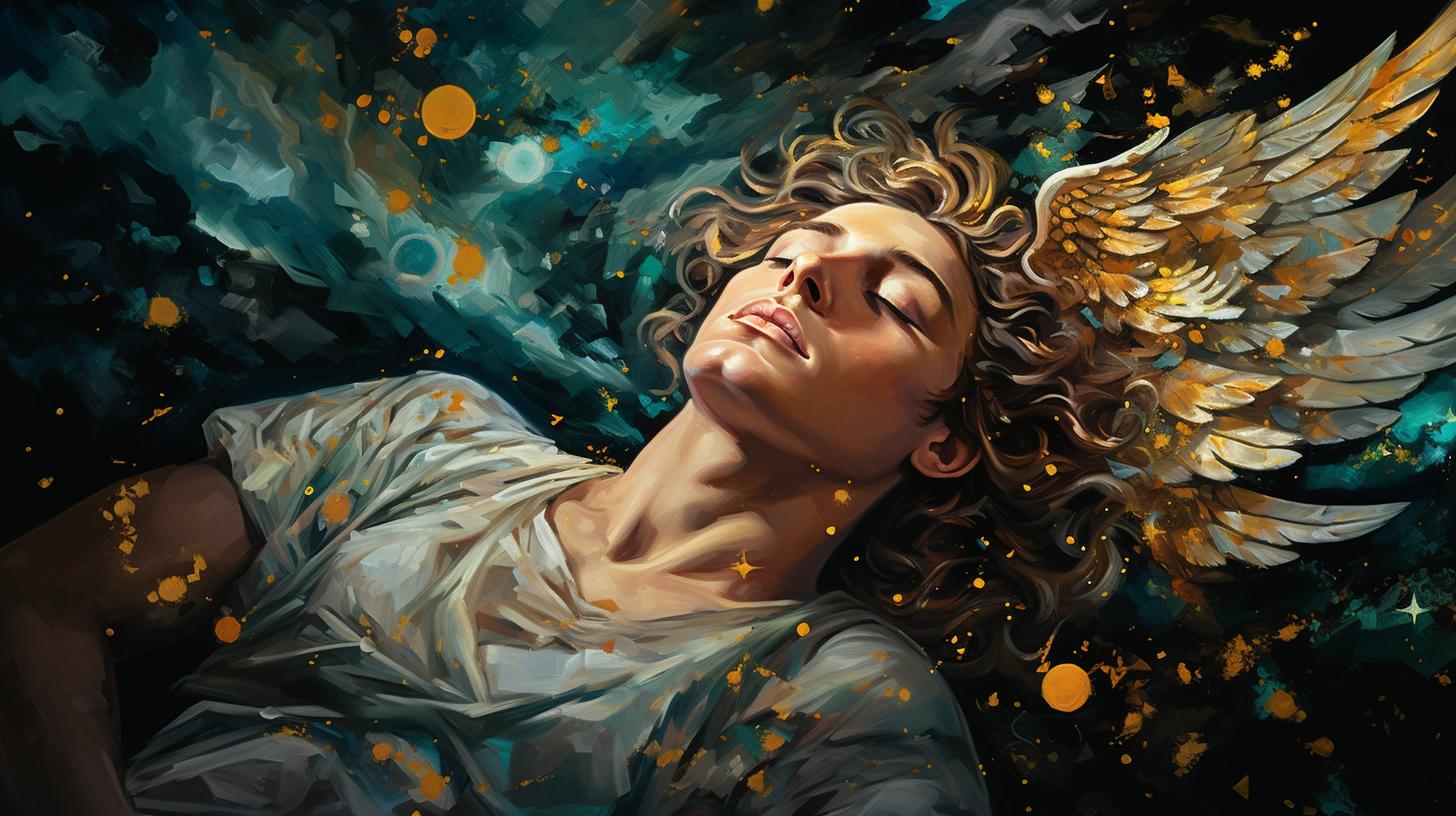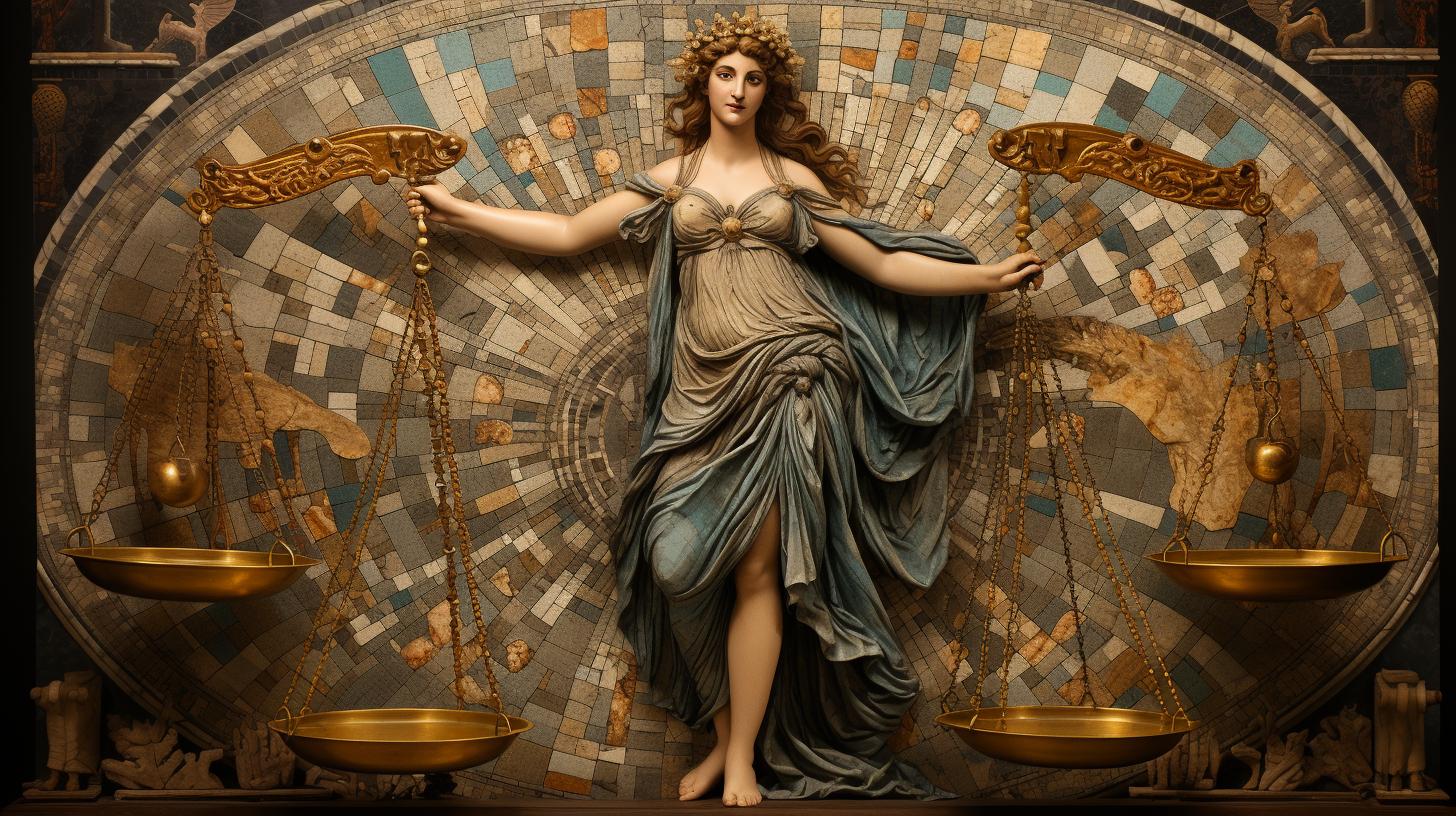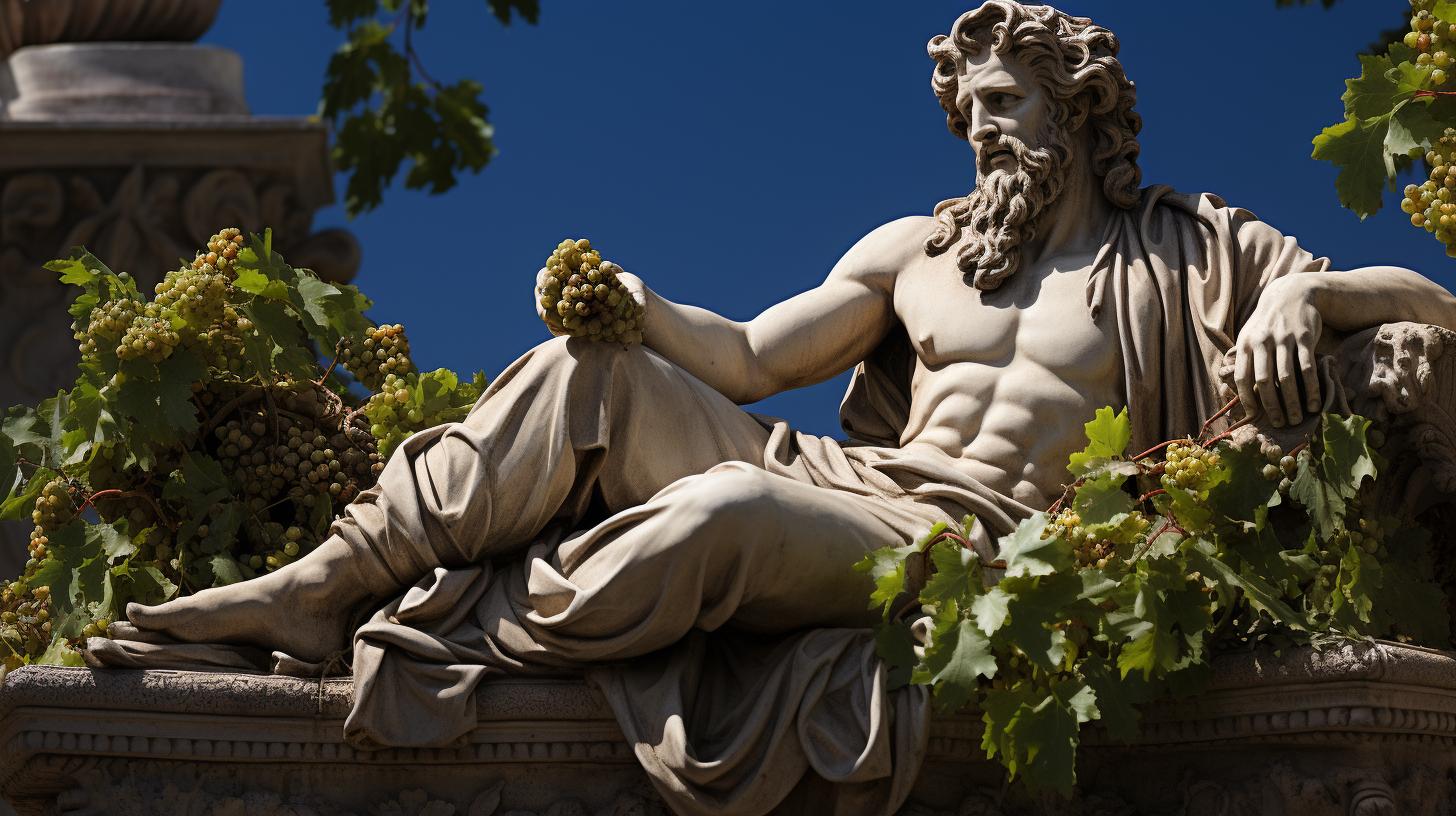Roman God Somnus: Unveiling the Mythology and Power of the Sleep Deity

Roman god Somnus, also known as Hypnos, holds a significant place in Greek and Roman mythology. Born from the union of Nyx, the goddess of night, and Erebus, Somnus resides in the underworld.
As the deity of sleep, Somnus possesses the power to influence and control the dreams and slumber of humans. With a tranquil and benevolent nature, Somnus is often depicted with wings and carrying symbols such as a horn of opium or an inverted torch.
Through various ancient texts and mentions in literary works, Somnus continues to captivate our fascination with his role in the world of dreams and rest.
Overview of Roman God Somnus
Within the realms of Greek and Roman mythology, the figure of Roman God Somnus, also known as Hypnos, holds a significant position as the deity of sleep. This enigmatic god, born from the union of Nyx, the goddess of night, and Erebus, resides in the underworld, governing the domain of dreams and rest.
As we delve into the mythology surrounding Somnus, we uncover a fascinating tapestry of divine origins and celestial relations. Exploring the physical representation and characteristics associated with him provides insight into the divine realm that Somnus occupies.
A notable aspect of Somnus is his synergistic connection with his twin brother, Thanatos, who personifies death. Together, in the ethereal dominion of the underworld where the sunlight never reaches, they command a realm entwined with the essence of sleep and eternal slumber.
In ancient texts, Somnus has left an indelible mark. The ‘Ilíada’ by Homer recounts a captivating tale in which Somnus lulls Zeus to sleep, aiding the Greeks in the fabled Trojan War.
Additionally, prominent authors such as Virgil and Ovid have referenced Somnus in their literary works, solidifying his prominence in Roman literature.
The physical depiction of Somnus reveals a youthful figure adorned with wings, which often grace his shoulders or forehead. Symbolically, he is known to carry a horn of opium or an inverted torch, capturing the essence of his power to induce dreams and tranquil slumber.
From Somnus’ divine lineage emerges a legion of children, including the Oneiroi, a group of a thousand brothers responsible for delivering dreams to mortals. Among his offspring, Morpheus shapes dreams, Icelus weaves dreams of animals, and Phantasos brings forth dreams of inanimate objects.
Throughout Greek and Roman societies, Somnus held significant influence. In the worship of the gods, rituals and cults dedicated to him were prevalent, worshiping his divine role in the realm of sleep.
His impact on dreams and sleep governed the lives of mortals, as half of their existence was under his watchful domain.
In modern times, the legacy of Somnus endures in literature and media, with references found in works such as Percy Jackson. His symbolic significance continues to be interpreted, offering insights into the depths of the human psyche and the realm of dreams.
As we reveal the captivating mythology and power woven within the tapestry of Roman God Somnus, a realm of ethereal slumber and dreams becomes open for exploration, allowing us to better understand the influence of this divine entity in ancient and contemporary societies.
The Mythology of Somnus
The mythology surrounding Somnus, also known as Hypnos, is a captivating tale that intertwines Greek and Roman traditions. Dive into the origins and parentage of Somnus, and explore his significant role in the realms of sleep and dreams.
Origins and Parentage of Somnus
Somnus, the Roman god of sleep, traces his lineage to Nyx, the esteemed goddess of night. It is believed that Nyx, in a union with Erebus, gave birth to Somnus, bestowing upon him the ability to rule over the domain of slumber and rest.
With Nyx as his mother and the enigmatic Erebus potentially as his father, Somnus inherits a unique and powerful lineage.
Somnus’ Role in Greek and Roman Mythology
In both Greek and Roman mythology, Somnus plays a significant role as the god of sleep. He holds sway over the dreams and sleep patterns of mortals, exerting his influence to shape their nightly experiences.
Somnus wields the power to bring tranquility and respite to weary souls, while also possessing the ability to grant visions and nightmares.
According to ancient tales, Somnus possesses a serene and gentle nature. He is often portrayed as a kind and benevolent deity, offering solace and rejuvenation through the blissful embrace of sleep.
It is said that he maintains ownership over half of the mortal lives due to his authority over their periods of slumber.
Within Greek mythology, Somnus is particularly noted for his role in the Trojan War. In Homer’s epic poem, the ‘Iliad,’ Somnus is summoned by Hera, the queen of the gods, to lull Zeus into a deep sleep.
This strategic intervention aided the Greek forces, as Zeus‘ absence from the battlefield bolstered their chances of victory.
Somnus’ influence extends into Roman literature as well. Renowned authors such as Virgil and Ovid make references to Somnus, acknowledging his importance in Roman culture and mythology. These literary works depict the god of sleep and his interactions with other deities, further cementing his place in the pantheon of Roman gods.
- The mesmerizing tale of Somnus captivates both ancient and modern audiences.
- His origins lie in the union of Nyx, the goddess of night, and potentially Erebus.
- Somnus assumes a tranquil and benevolent persona, overseeing the dreams and sleep patterns of mortals.
- His pivotal role in the Trojan War shines through in Homer’s ‘Iliad,’ where he aids the Greeks by putting Zeus to sleep.
- Noteworthy Roman authors like Virgil and Ovid pay tribute to Somnus, emphasizing his significance in literature.
As you delve deeper into the intriguing mythology of Somnus, the intricate web of his divine lineage and his significant role in Greek and Roman culture begins to unfurl.
Representation and Attributes of Somnus
Representation plays a crucial role in understanding the essence of Roman god Somnus. Through various physical appearances and symbolic attributes, Somnus is brought to life in the imagination of ancient cultures.
Somnus’ Physical Appearance
Somnus is often depicted as a youthful figure, adorned with wings on his shoulders or forehead. These wings symbolize his ability to swiftly move through the realm of dreams and sleep.
Artists have portrayed him with a serene countenance, representing his tranquil nature. While he might not possess the intimidating presence of other gods, his ethereal beauty and graceful features captivate those who encounter his visage.
Symbols and Attributes Associated with Somnus
In addition to his physical appearance, Somnus is accompanied by a range of symbols and attributes that further define his role as the god of sleep. One of the most recognizable associations is his possession of a horn of opium, representing the power to induce dreams and bring restful slumber.
This symbol demonstrates his control over the realm of dreams and his ability to influence the subconscious mind. Another attribute often seen in depictions of Somnus is an inverted torch, illuminating the path to the world of dreams.
This inverse symbolizes the darkness and tranquility needed for a restful sleep, as it is within the depths of somber quietude that one can truly embrace the realm of dreams. The presence of these symbols and attributes evokes a sense of peace, serenity, and introspection, capturing the essence of Somnus and the world he governs.
These visual representations connect viewers to the realm of dreams and invite them to consider the significance of restful sleep in their own lives. In conclusion, through various physical representations and symbolic attributes, Somnus is brought to life as a serene and ethereal deity associated with the realm of sleep.
His youthful appearance, adorned with wings, portrays his ability to navigate the world of dreams. The symbols of the opium horn and inverted torch highlight his power to induce dreams and create the ideal conditions for a restful slumber.
Together, these elements create a vivid representation of Somnus, offering insight into his role as the guardian of dreams and sleep.
Somnus in Ancient Texts and Literature
The importance of Somnus, the Roman god of sleep, is evident in his presence across various ancient texts and literature. His role and influence on the world of dreams and sleep have been explored by renowned authors and poets of the time.
Let us delve into the references of Somnus in the works of Homer, Virgil, and Ovid.
Mention of Somnus in the Iliad of Homer
In the epic tale of the Trojan War, the Iliad, Homer mentions the intervention of Somnus in shaping the course of events. Somnus exerts his power by putting Zeus, the king of gods, to sleep to aid the Greeks in their conflict against the Trojans.
This portrayal highlights the extent of Somnus’ influence, even over the divine realm.
Somnus in Roman Literature: References by Virgil and Ovid
The Roman poets Virgil and Ovid also make notable references to Somnus in their literary works. Virgil, in his iconic masterpiece, the Aeneid, illustrates a vivid encounter between Aeneas, the hero, and Somnus.
The god of sleep is invoked by Juno, the queen of the gods, to deceive and distract Aeneas from his destined path. This encounter showcases Somnus as a powerful entity capable of swaying mortal destinies.
Ovid, in his renowned collection of mythological transformations, the Metamorphoses, includes several mentions of Somnus. Grand tales of slumber and dreams interspersed throughout Ovid’s work depict Somnus as a central figure, closely connected to the realm of mortals and their subconscious experiences.
These accounts heighten the intrigue and significance of Somnus in Roman literature.
- The Iliad of Homer recounts the involvement of Somnus in altering the course of the Trojan War.
- Virgil’s Aeneid portrays a compelling encounter between Aeneas and Somnus, emphasizing the god’s ability to influence mortal fates.
- Ovid, in the Metamorphoses, presents various tales involving Somnus, delving into the realm of dreams and sleep.
Through the distinctive perspectives of Homer, Virgil, and Ovid, we gain deeper insight into the captivating nature of Somnus, weaving his presence into the fabric of ancient literature and immortalizing the god of sleep within the Roman cultural consciousness.
The Relationship between Somnus and Hypnos
The connection between Somnus and Hypnos in Greek and Roman mythology reveals both similarities and differences in their roles and characteristics.
Hypnos and Somnus: Similarities and Differences
Hypnos and Somnus are often considered interchangeable, representing the same deity in different mythological traditions. Both gods are associated with sleep and dreams, holding sway over the realm of slumber. However, there are subtle variations in their portrayal.
- Hypnos is primarily recognized in Greek mythology, while Somnus is the Roman counterpart.
- They may differ in physical appearance, attributes, and symbolism, although both are often depicted with wings.
- Hypnos is sometimes depicted carrying a horn of opium, while Somnus is associated with an inverted torch.
Mythological Connections and Interactions
As twin brothers, Hypnos and Somnus share a close bond within the realm of sleep and death.
They coexist in the underworld, where the sun’s light never reaches.
In some versions of mythology, Hypnos and Somnus work in collaboration. Hypnos uses his power to induce sleep, allowing Somnus to enter the dreams of mortals. Together, they shape the dreamscape and influence the slumbering mind.
Furthermore, Hypnos and Somnus both have offspring associated with dreams. Hypnos is the father of the Oneiroi, a multitude of dream deities responsible for presenting various forms of dreams to humans.
Somnus, meanwhile, has children who personify different aspects of dreams, such as Morpheus, Icelus, and Phantasos.
In conclusion, the relationship between Somnus and Hypnos intertwines their mythological significance. While sharing similarities as gods of sleep and dreams, their origins, attributes, and specific roles may differ between Greek and Roman traditions.
Nevertheless, their combined influence contributes to the captivating realm of nighttime reverie.
The Role of Somnus in Greek and Roman Society
In Greek and Roman society, Somnus held a significant role that encompassed both worship and the influence on dreams and sleep. Let’s delve into the details of these interconnected aspects surrounding the god of sleep.
Worship and Cult of Somnus
Within ancient Greek and Roman society, Somnus was revered and worshipped. Dedicated temples and altars were erected in his honor, providing a space for devotees to pay their respects and seek his blessing.
Rituals and ceremonies were conducted in these sacred spaces, offering prayers and sacrifices to gain Somnus’ favor and ensure restful nights.
The cult of Somnus, specifically in Roman society, had its own priesthood responsible for overseeing the worship and maintaining the rituals associated with the god of sleep. These priests played an integral role in facilitating the connection between the mortal realm and the divine realm embodied by Somnus.
Somnus’ Influence on Dreams and Sleep
The influence of Somnus extended beyond the realm of worship into the very fabric of dreams and sleep experienced by individuals. Believed to hold sway over both blissful and troubling dreams, Somnus was often invoked to grant peaceful and pleasant sleep, protecting against nightmares and disturbances of the restful state.
People sought Somnus’ intervention to bring prophetic dreams, guidance, and inspiration. Through these dreams, it was believed that messages from the divine realm could be received, providing insights into the future or offering solutions to present challenges.
- Somnus’ ability to shape dreams:
- Morfeo, one of Somnus’ sons, was responsible for shaping dreams, allowing individuals to experience a diverse range of dreamscapes and narratives.
- Icelo, another son of Somnus, specialized in crafting dreams featuring animals, bringing forth vivid and symbolic visions of various creatures.
- Fanto, yet another son, had the power to create dreams involving inanimate objects, presenting individuals with dream scenarios involving possessions, nature, or mystic symbols.
Overall, Somnus’ influence on dreams and sleep was integral to the spiritual and psychological well-being of individuals in both Greek and Roman societies.
With rituals dedicated to his worship and prayers invoking his assistance in achieving restful nights, Somnus held a revered place in the hearts and minds of ancient worshippers.
Legacy and Influence of Somnus in Modern Culture
The legacy of Somnus, the Roman god of sleep, continues to have a profound influence on modern culture. From literature to media, Somnus’s presence can be seen and felt, captivating audiences with his mythical power and symbolic significance.
Somnus in Contemporary Literature and Media
Many contemporary authors and filmmakers draw inspiration from the rich mythology surrounding Somnus. In literature, his name and character often appear in fantasy and supernatural genres, where dreams and the subconscious mind play significant roles.
Notably, Somnus has been featured in popular book series like Percy Jackson, bringing his mythological aura to young readers and sparking their imagination.
In the world of media, Somnus’s influence can be observed in films, TV shows, and video games. His associations with dreams, sleep, and the mysterious realm of the unconscious mind make him a fascinating character to explore.
From dream sequences to deep psychological narratives, Somnus contributes to the creation of captivating storytelling and immersive experiences.
Symbolic Significance and Interpretations of Somnus
Beyond his portrayal in literature and media, Somnus holds symbolic significance in various contexts. He represents the concept of sleep and rest, reminding individuals of the importance of a peaceful and rejuvenating slumber.
His presence in artwork, tattoos, and symbolic representations serves as a reminder to cherish the power of dreams and the need for a balanced state of rest in our busy lives.
Moreover, Somnus is often interpreted metaphorically as a representation of the unconscious mind, tapping into the realms of dreams, desires, and hidden thoughts. He becomes a symbol of introspection and self-discovery, encouraging individuals to explore their inner psyche and uncover hidden truths.
- His inclusion in psychological discussions and therapeutic practices showcases the recognition of Somnus as a symbol for exploring the depths of the human mind.
- Somnus’s imagery and attributes have also inspired fashion, art, and design, with his winged form and dream-related elements being incorporated into various creative endeavors.
- In the field of psychology and philosophy, Somnus acts as a symbol for exploring the subconscious and understanding the mysteries of the mind.
In conclusion, the legacy of Somnus transcends ancient mythology and continues to manifest in contemporary culture.
From literature to media, his presence enriches storytelling and captivates audiences. Moreover, his symbolism in various contexts reminds individuals of the significance of sleep, dreams, and introspection in our modern lives.
Somnus’s enduring influence showcases the timeless power of myth and its ability to resonate with human experiences throughout the ages…..




















